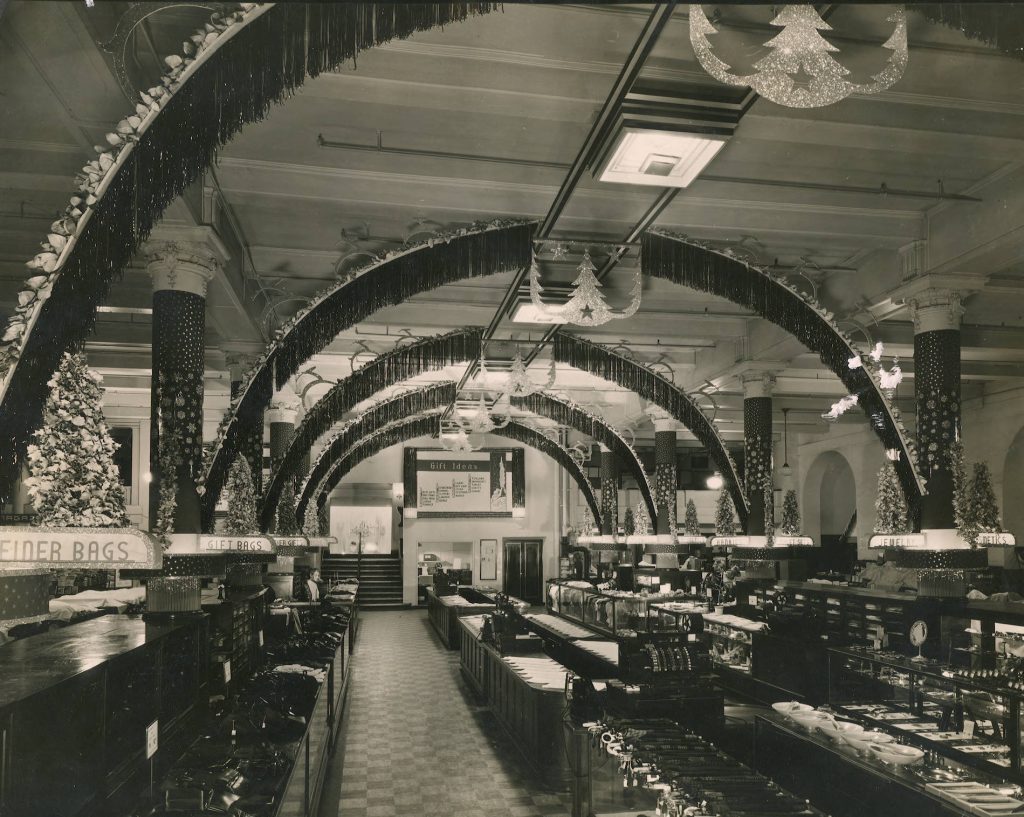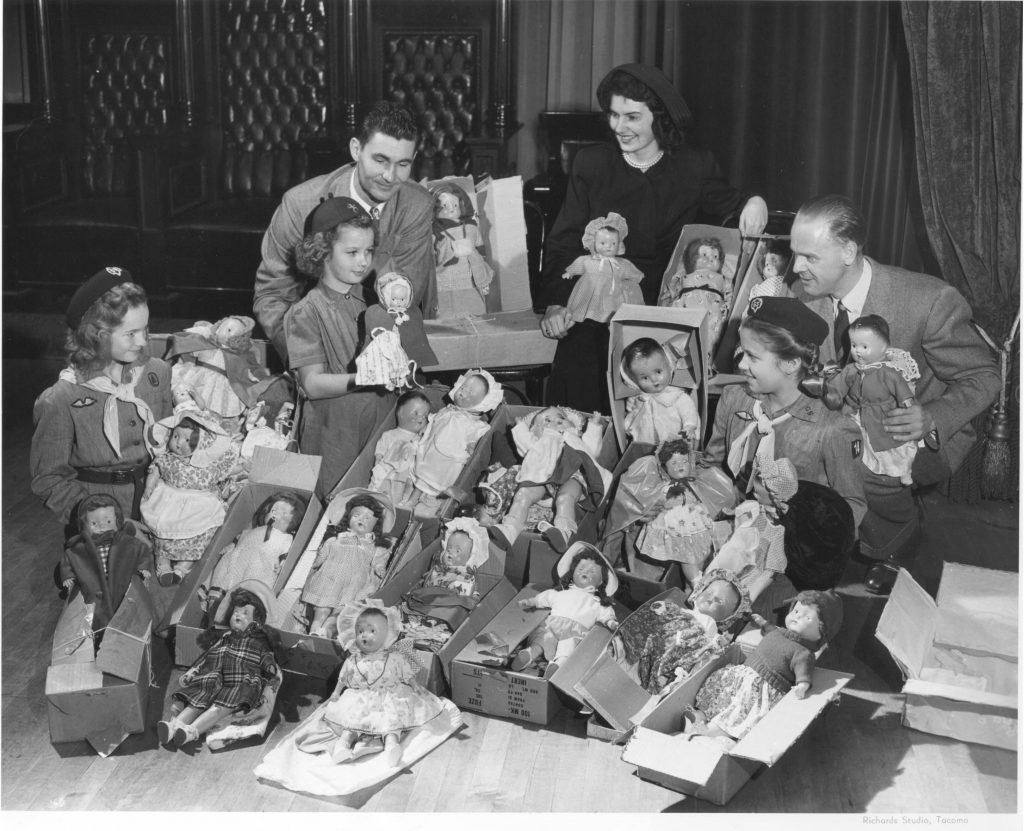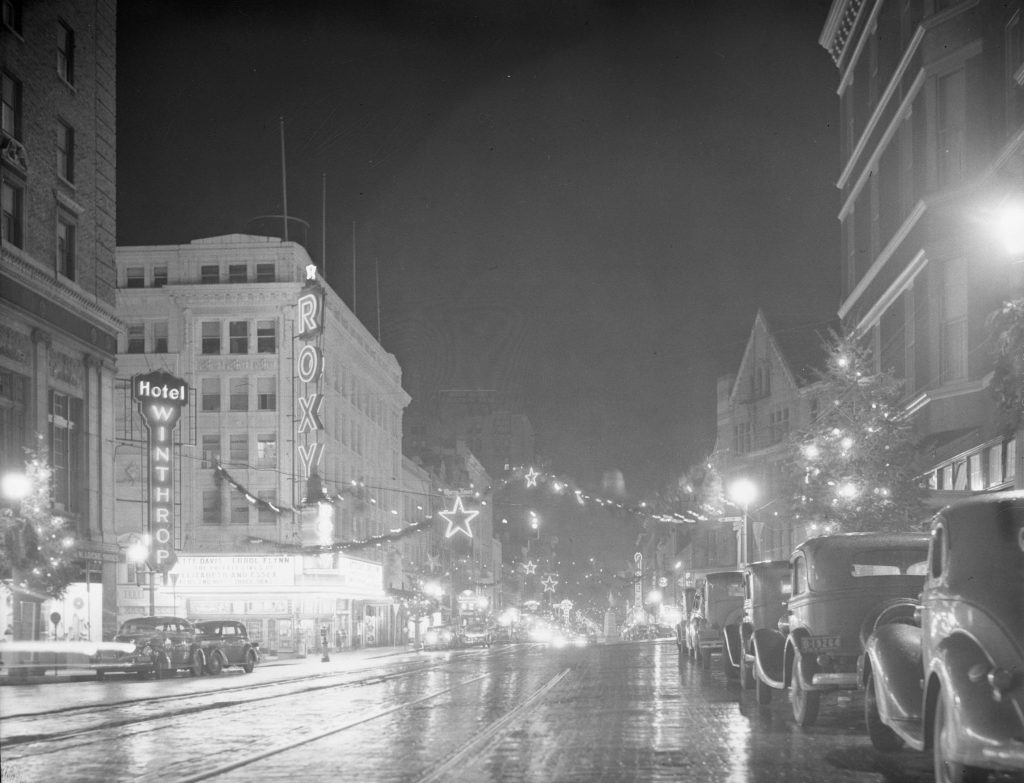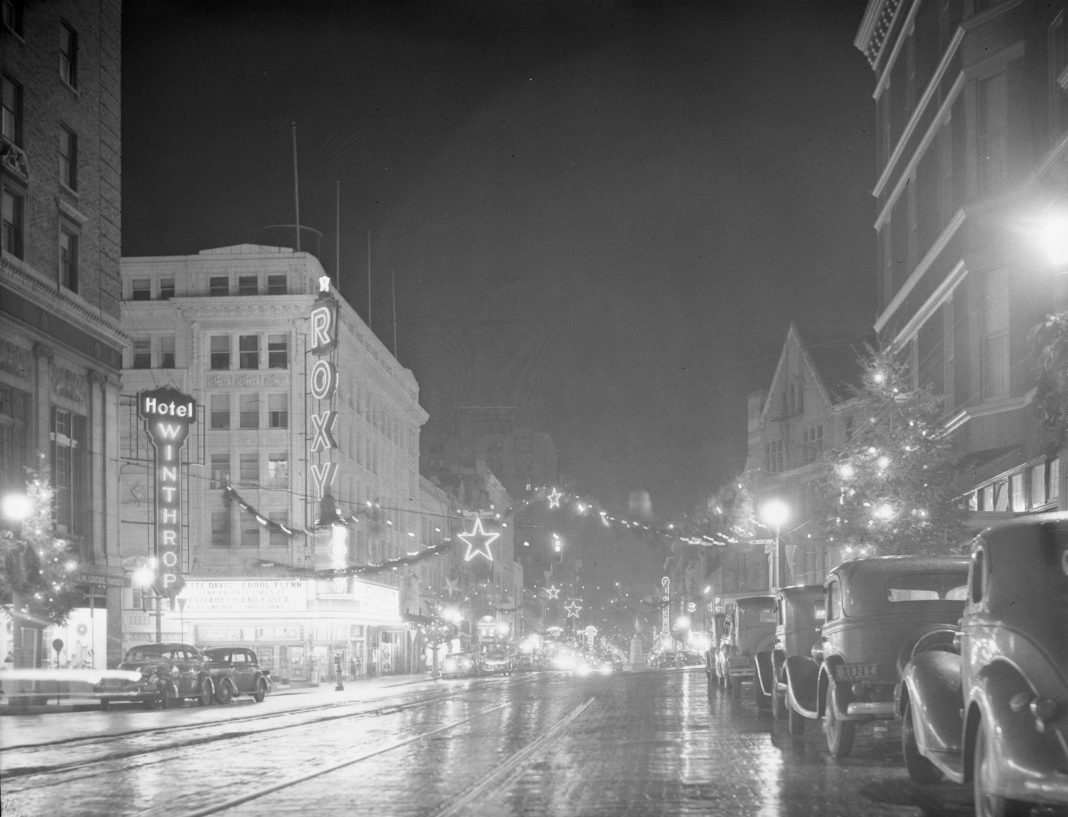On December 20, 1940, the Tacoma Orthopedic Association (which later helped found Mary Bridge Children’s Hospital) held a party for child patients from the physiotherapy department of the Tacoma General Hospital at Wells Hall. Among the patients were sixty victims of a recent polio epidemic. Santa Claus presented red tissue-paper-lined gift baskets filled with toys, fruit, and games to the children. Those with siblings at home were given extra items for them in the baskets. Attendees ate ice cream, cookies and candy while watching a show with music, danced and even enjoyed a short film.
The Christmas season for Tacoma in 1940 was a special one, as the United States was finally getting out of the Great Depression. On the day after Thanksgiving, November 22, stores started their holiday sales. Many children joined their mothers downtown to see the store displays with schools closed. “Holiday decorations over the streets,” wrote the Tacoma Times, “and bright store windows full of Christmas gift suggestions for everyone from cradle to carpet slipper age made an inviting sight.” To help attract shoppers, the city bus was free from 10 to 11:30 a.m. with coupons cut from the newspaper.

Throughout the season, stores gave promotions and sales to attract customers. The Rhodes Brothers Department Store offered an evening choir concert series the week before Christmas. These included the Adelphian Choral Society (University of Puget Sound), Choir of the West (Pacific Lutheran College), Lincoln High School’s acapella choir, and The Carolers from Stadium High School.
The city sold wholesale trees from the Cushman Power plant and its transmission lines areas. Popular gifts that year included clothes and electrical goods. Another well-liked gift was satsumas, then called Japanese oranges. When a delivery of them was made to the city on December 7, the paper reflected two days later that they were “as much a part of Christmas as the Christmas tree.” Two boxes sold for $1.60 wholesale.
And, of course, the holiday season was a big time for baking. On December 18, Franklin Food Stores advertised their big displays of candy (two pounds for twenty-three cents) and baking ingredients. “We have the best making for fine fruit cakes,” they boasted.
For baking ideas, readers could clip recipes from the Tacoma Times. They could find recipes for coconut peaks, almond loaf cake, orange sponge cake, apricot mince pie and fruit cake. “Do your holiday baking early,” advised the Tacoma Times on November 28, offering two recipes for fruit cake (“Busy housewife” and “Maine” versions), recommending giving them as gifts tied up prettily with a red bow and holly. After all, if you baked such “yuletide delights,” now they would keep to December 25!
Readers of the Times could also turn to Cynthia Gray’s advice column. The long-time writer offered solutions to holiday problems such as meeting future in-laws and what a woman should do after accepting a gift from a man whose feelings she did not return. She also offered household advice and recipes. She advised readers not to overly stress about holiday eating. “A few days of good holiday cheer,” Gray replied to a ‘Christmas Hostess,’ on December 19, “won’t harm the most ardent of weight-worriers.”

Clubs and groups held parties during the holiday season. The Club of Hearts held a dance on Christmas Day at Hotel Winthrop’s Crystal Ballroom. Tacoma Senior Girl Scouts hosted a city-wide party for Brownies at the American Legion Memorial Hall on December 14, with games, singing and a puppet show. Bethany Presbyterian Church held a world hymn concert on Sunday, December 22, with Slovak, German, Russian, Laplander (Suomi), Norwegian, Bohemian and English songs.
During the holidays, people thought about people in need. The Salvation Army was very busy. A crew of 42 at their Boys’ Club shop made toys while the Music Box Theater collected canned food in lieu of admission. Other groups such as the Volunteers of America and the Tacoma Rescue Mission also held Christmas dinners for the homeless and gave food baskets to families in need.
Other charity efforts focused on children. The Elks entertained 800 children at a party complete with an elaborate Christmas tree and vaudeville performances. They gave attendees toys and other gifts from their Stocking Filling Drive, the 14th year of the program. Another group, the Tuberculosis League of Pierce County (now part of the American Lung Association), sold Christmas seals to fund tests and treatment of children with the disease. The League sent out 20,000 letters to potential donors. They also sold the seals at Rhodes Brothers and Fisher Department Stores booths, staffed by volunteers such as the PTA.

Even as people celebrated the holidays, the shadow of World War II was present. Some people tried to help victims of the conflict. The Canadian Legion sponsored a Christmas decoration demonstration at the Fisher Company’s auditorium. Proceeds went to the British-American War Relief Fund Associations’ Kitchen on Wheels Fund.
The United States would join the world conflict less than a year later. But even with war clouds looming, many found the holidays of 1940 a time of hope. The day after Christmas, the editors of the Tacoma Times wrote about “the precious leaven of Christmastime with its promise of peace and goodwill. Until that leaven has perished utterly, as long as men turn even for a day to Christmas and its promise, the world need not abandon hope that it will turn again to goodwill and peace.”














































